
|
|
|
|
Media Matters |
|
Legalizing sodomy nationwide, opening the door to the possibility of same-sex marriage and consecrating an openly gay bishop are certainly more important than anything that happened on the small screen last year or any other year. But, that being said, some major thresholds still were, indeed, crossed is 2003. The biggest gay TV stories of the year, in rank order: 1. Queer Eye for the Straight Guy Without question, the number-one story involving gays on television was that a reality show featuring five lovable gay men was, hands down, the year's most-talked-about new program. From the moment Queer Eye for the Straight Guy debuted on July 15, it was a sensation. On this makeover program, the Fab Five help a style-deficient straight man by reworking his wardrobe, teaching him to cook and choose wine, redecorating his home, giving him grooming advice and counseling him on culture. After the show's first two segments attracted the largest audiences in Bravo's history, executives at the cable channel's corporate sibling, NBC, decided Queer Eye was such a success that it was worthy of being broadcast on the network. That was a rarity in television, as it's virtually unheard of for a major network to follow a cable channel's lead. The daring decision proved to be an inspired one, though, as the NBC version of the program snared 7 million viewers-more than any of the network's other offerings that particular summer night.
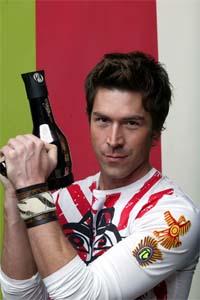 More successes followed, as NBC has continued to air episodes of the program from time to time, while the Bravo version of Queer Eye has consistently been the channel's top program, regularly attracting some 3 million viewers.
More successes followed, as NBC has continued to air episodes of the program from time to time, while the Bravo version of Queer Eye has consistently been the channel's top program, regularly attracting some 3 million viewers.
Some detractors have criticized the Fab Five because of what might be called their "flamboyant factor" reinforcing gay stereotypes. But other observers-this writer included-have praised the program for doing its part to reduce homophobia. When straight people are exposed to gay people, the comfort level mounts and the hatred dissipates. And with all the buzz about Queer Eye, lots and lots of folks are being exposed to five gay-and proudly so-men on a weekly basis. The hunky grooming expert in the group may have made the most insightful comment on the issue when he told The Advocate that criticizing the Fab Five for being flamboyant is insulting to a large segment of Gay America. "This whole stereotype issue may force the gay community to look at our own homophobia," Kyan Douglas was quoted as saying. "If being gay is only OK if you're straight-acting, why are we letting them set the standard?" 2. Ellen DeGeneres Show
In 1997, Ellen DeGeneres became the first openly lesbian or gay actor to star in a network television program. More specifically, ABC made history by airing a segment of its sitcom Ellen in which the main character, Ellen Morgan, announced that she was a lesbian at the same moment that DeGeneres acknowledged her real-life sexual orientation. The episode attracted an impressive 46 million viewers and earned DeGeneres an Emmy for writing the script. The euphoria was, however, short-lived. In the words of one reviewer, "After Ellen DeGeneres came out as a lesbian, her series began to lose viewers." Accusations quickly arose that Ellen placed too much emphasis on homosexuality and thereby became "too gay." Within a matter of months, ABC canceled the program. DeGeneres was given a second shot on network television when, in the wake of the first sitcom, CBS introduced The Ellen Show. But that program never attracted a strong following and was canceled toute suite. It now looks like the third time's the charm for DeGeneres and network television, as her daytime talk show on NBC, which debuted in September 2003, appears to be a solid hit. The Ellen DeGeneres Show provides the star with a platform on which her charm and quick wit can shine. The ratings were strong from the beginning and are holding their own as DeGeneres welcomes a long string of top stars on the hour-long program-testimony to DeGeneres' popularity among the Hollywood set. Many denizens of Middle America see this woman with the blond hair and affable personality as the country's most visible lesbian, and that's not all bad. 3. Will & Grace
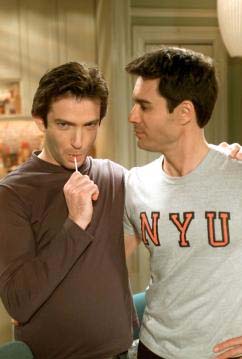 Because this member of NBC's "Must See TV" Thursday night lineup has been around since 1998, it's easy to forget its importance.
Because this member of NBC's "Must See TV" Thursday night lineup has been around since 1998, it's easy to forget its importance.
But Will & Grace definitely deserves recognition as a groundbreaker. After premiering the year after Ellen was canceled, the show has continued to bring gay characters into American living rooms for half a dozen seasons. And viewers clearly like what they see, as the show has the third largest audience on network television-quite a remarkable feat. The fast-paced sitcom has now won a full dozen Emmys, including in the best comedy category. In 2003, the show won four of the statues, playing a major role in helping NBC score big in the awards competition. Last year was Debra Messing's moment in the sun, as she won for outstanding lead actress in a comedy series for her role as Grace. Her success completed the cycle for the show's stars, as Sean Hayes as Jack and Megan Mullaly as Karen won for their supporting roles in 2000 and Eric McCormack as Will won for his leading role in 2001. Will & Grace also deserves accolades for showing TV viewers two distinct images of gay men. Jack is promiscuous; Will dates only rarely. Jack has no consistent means of support; Will works at a prestigious Manhattan law firm. Jack is flighty, highly excitable, and over-the-top on the swishy scale; Will is so lacking in effeminate mannerisms that focus group members who previewed the pilot episode refused to believe that he was gay. In the words of one scholar, "Will is the 'straight-acting,' responsible gay character who balances out Jack's nellie fits and keeps gay media activists from screaming 'stereotype!' too loudly." A continuing-and valid-criticism of the show is that neither of the two gay characters has so much as kissed another man, except in one episode where Will and Jack impulsively lock lips in a plotline about . . . well, about the fact that network television assiduously avoids showing two gay men kissing. Devoted viewers had hopes of Will beginning a romantic relationship a couple times this past season, but neither potential hook up evolved beyond a date or two. 4. Queer as Folk
But the hour-long Queer as Folk definitely deserves recognition, partly because it is the most unapologetic depiction of gay life on American television and partly because it serves as a consistent reminder that HIV and AIDS are still very much a part of gay male life-a reality that neither Queer Eye nor Will & Grace communicates. Virtually every episode of Queer as Folk at least mentions the pandemic that continues to plague the community. One of the program's most compelling plotlines involves the relationship between Michael, who is HIV negative, and Ben, who is HIV positive. When Michael learned that the handsome and buff professor was carrying the virus, he immediately sought the counsel of his friends. To a man, they told him not to have sex with Ben. "You're playing with fire," one friend told Michael. "What happens if a condom breaks or if he's flossing his teeth and his gums bleed? I wouldn't do it no matter how much I liked the guy." Heeding the advice, Michael ended the relationship. But the plotline didn't end there. Michael couldn't put his feelings for Ben behind him, convinced that he'd found the love of his life. The two men then began talking-in earnest-about what it would take for a relationship between them to work. Michael assured his would-be lover that he'd protect himself, and Ben insisted that Michael know the realities of his health status, such as the fact that he takes 50 anti-viral pills a day and that catching a cold, for him, could be fatal. While those details and warnings may have been for Michael, they simultaneously served as a primer on HIV for Queer as Folk viewers as well. After several extended conversations and a great deal of thought, the two men finally had sex, beginning a relationship that has evolved into a rich and loving one for both of them-as well as the first of its kind ever depicted on American television. 5. It's All Relative A very different kind of relationship is the centerpiece of another show that became a milestone in gay TV during 2003. The ABC sitcom It's All Relative has brought prime-time network television its first committed, long-term gay male couple. Philip owns an art gallery and Simon teaches school, but more significant than their occupations are that they've been together for twenty years and have raised a beautiful and intelligent daughter, Liz, who is now attending Harvard. Most of the plotlines revolve around the conflict between the gay dads and the working-class and socially conservative parents of Liz's boyfriend. Mace and Audrey operate a bar, and they're none too thrilled that their only son, Bobby, has become involved with a young woman who has two "light in the loafers" fathers. Reviewers have generally been less than kind to the program that relies heavily on cardboard characters and tired scenarios-the gay guys have no interest in baseball while the straight father lives for it, the daughter refuses to allow polyester to touch her skin while the straight mother wears nothing but. Criticism aside, It's All Relative offers viewers half an hour of light-hearted banter while at the same time showcasing a pair of gay men who are devoted to each other and to the well-being of their daughter-which translates to "family values." 6. Angels in America
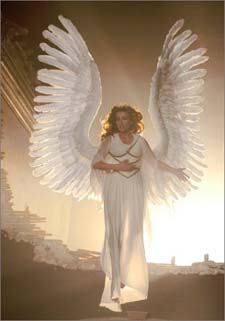 On the basis of pure quality, Angels in America was a standout.
On the basis of pure quality, Angels in America was a standout.
HBO's adaptation of gay playwright Tony Kushner's Broadway blockbuster about the early days of the AIDS epidemic aired in a six-hour tour de force in December. Perhaps the most memorable aspect of the programming-beyond the sheer power and poignancy of the Pulitzer Prize-winning drama of it all-were the performances by the cast. It would be tough to come up with a more stunning quartet of acting talent than Meryl Streep, Al Pacino, Emma Thompson, and Mary Louise Parker, and yet every one of them lived up to her or his reputation, and then some. Streep's success at playing multiple roles, in and of itself, was worth a viewer spending two nights in front of the television set. 7. Boy Meets Boy Bravo hit paydirt a second time when, soon after its Queer Eye debut, the cable channel moved into the world of dating reality shows with a series that revolved around a handsome gay man. During the six episodes of Boy Meets Boy, James faced the challenge of narrowing 15 male suitors down to one. The surprise twist was that, initially unknown to him, several of the guys were straight men trying to trick the 32-year-old human resources executive into selecting one of them as Mr. Right. If one of the straight imposters succeeded in being "the chosen one," the guy would win a cash prize. James' gaydar ultimately carried the day, and he and the gay man of choice, Wes, won a romantic vacation. Bravo won as well, as the series drew more than 1.5 million viewers. That made it the second most successful program in the channel's history-right behind Queer Eye. 8. Six Feet Under HBO's popular and much-acclaimed series Six Feet Under merits a spot on the list of 2003's best gay TV shows for two reasons. First, the program offers television viewers their only gay character of color. The hunky Mathew St. Patrick plays Keith, a police officer turned security guard who's in an on-again/off-again relationship with one of the sons in the family that owns the funeral business at the center of the show. Second, the hit series gives viewers a taste of the struggles that gay couples sometimes face. One of the major areas of conflict has been that Keith is open about his sexuality while David is still struggling with self-acceptance. Other issues include Keith's sense of responsibility to his family and a temper that sometimes rages out of control. And then there was the time another guy caught David's eye and also the occasion that the two lovers invited a third man into their bed, as well as David's knowledge of Broadway show tunes compared to Keith's total lack of interest in the topic, etc., etc., etc. Indeed, a realistic window into gay relationships. 9. Amazing Race The CBS reality program Amazing Race gave gay TV fans another red-letter day when Reichen Lehmkuhl and Chip Arndt beat out 11 other couples to win $1 million in the globe-trotting competition that requires brains, brawn and, well, a willingness to do whatever the show's creators ask the contestants to do. Along the way, the handsome and buff pair-identified on the screen each week as "married"-invited network television viewers to help them celebrate their first anniversary. The pair also may have managed to break a few more stereotypes about gay people. Lehmkuhl, 28, is a pilot and Air Force Academy graduate; Arndt, 36, is a financial consultant with degrees from Yale and Harvard. Despite their many accomplishments, the two guys weren't able to sustain their relationship much beyond the one-year mark. They broke up shortly after their Amazing Race victory. 10. The L Word
The L Word will premiere later this month on Showtime, with a cast of highly attractive and decidedly dodgy lesbian and bisexual women. Promotional material from the premium-pay channel describes the hour-long program as a female version of Queer as Folk. In the larger view of the evolution of gay people on television, The L Word may finally offer viewers their first on-going depiction of lesbians. That would be a major-and long overdue-breakthrough. Except for Ellen DeGeneres' trio of programs and fleeting glimpses of lesbians such as Dr. Carrie Weaver on ER, depictions of gay women have been much harder to find than those of gay men. Perhaps 2004 will be the year of the lesbian. 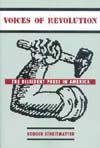 Rodger Streitmatter, Ph.D. is a member of the School of Communication faculty at American University in Washington, D.C. His latest book, Voices of Revolution: The Dissident Press in America has recently been published by Columbia University Press. He is also the author of Unspeakable: The Rise of the Gay & Lesbian Press in America (Faber & Faber, 1995) and Raising Her Voice: African American Women Journalists Who Changed History (The University Press of Kentucky, 1994)
Rodger Streitmatter, Ph.D. is a member of the School of Communication faculty at American University in Washington, D.C. His latest book, Voices of Revolution: The Dissident Press in America has recently been published by Columbia University Press. He is also the author of Unspeakable: The Rise of the Gay & Lesbian Press in America (Faber & Faber, 1995) and Raising Her Voice: African American Women Journalists Who Changed History (The University Press of Kentucky, 1994)
|
 Queer Eye for the Straight Guy made 2003 a red-letter year for gays on television
Queer Eye for the Straight Guy made 2003 a red-letter year for gays on television 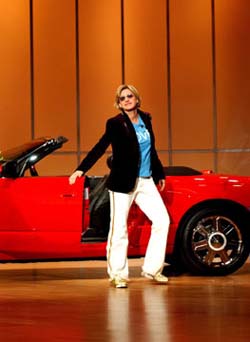 The number-two spot on the list of breakthroughs belongs to the woman who "started it all" vis-à-vis gay TV.
The number-two spot on the list of breakthroughs belongs to the woman who "started it all" vis-à-vis gay TV.
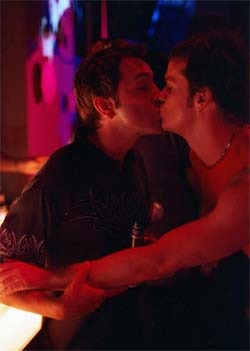 The Showtime cable channel's major contribution to gay TV is another program that's easy to forget because it's been airing since 2000.
The Showtime cable channel's major contribution to gay TV is another program that's easy to forget because it's been airing since 2000.
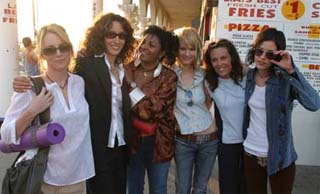 The final spot on the top 10 list goes to a show that has not yet aired but that promises to carry American television across yet another threshold.
The final spot on the top 10 list goes to a show that has not yet aired but that promises to carry American television across yet another threshold.